Cult Spaghetti Westerns
DJANGO
As one of the most iconic names in the Spaghetti Western tradition, Django is a character along the same lines of Clint Eastwood's 'The Man with No Name' as a lone gunfighter who travels from place to place despatching bad guys as he goes.
In this first film, the one that introduced Django to the world, you can see the influences of Yojimbo and A Fistful of Dollars, the film that introduced Sergio Leone and the Spaghetti Western to the world. Dragging a coffin with him, a stranger enters a rundown town and is asked, predictably enough, 'what's in the coffin?' The answer is a huge Gatling gun which Django (that isn't his name, it's the gun's name but it's stuck with him) uses to good effect, mowing down men left, right and centre.
In this film, Django (just as The Man with No Name did in Leone's film) manages to turn two warring factions against him before stepping back and letting them fight it out to the death. From the opening sequence in which a woman is strapped to a wooden frame and flogged before cutting away to our nameless gunmen dragging a coffin into a poor town which is drenched in blood to the final shootout between our hero and a sadistic, religious fanatic gringo general in a graveyard, the film is an unqualified success.
Just as Sergio Leone made a star out of Clint Eastwood in his Spaghetti Western, Sergio Corbucci turned Franco Nero into a Western superstar and a man who would ply his trade making many Westerns. Nero certainly has the look and the right bright blue eyes to be a star and helps that he looks the part when shooting people!
The film isn't anything particularly complicated or nuanced; the story is basic and allows for plenty of combat scenes. Django doesn't have the epic grandeur of something like Once Upon a Time in the West or The Good, the Bad and the Ugly and it really zips along through the 90 minute running time. It helps that Sergio Corbucci really knows how to compose an action sequence and clearly had his choice of stuntmen given the number of people who fall of horses or buildings. There aren't many likeable characters in the film as Django (I'll call him that for argument's sake) runs afoul of a sadistic gringo preacher who has a blood feud with an equally bloodthirsty Mexican. Neither of these men would have you rooting for them in the cinema or at home, leaving you with Django as the only plausible hero. As you desperately want the two main gangs to be wiped out, and know that this will inevitably happen, the only question is ' how will they all die?' The answer is 'not well!' as Django is a dead eye shot, wants the gold that is there for the taking and isn't afraid to gun someone if they look at him the wrong way.
Given the charismatic nature of the lead character, it is easy to see why Django spawned so many sequels (most of them unauthorised) and, given Corbucci's directorial flair, it is no surprise at all that the film is regarded as a landmark piece of European cinema and one of the finest Spaghetti Westerns ever made. Even by today's standards, the film is extraordinarily violent and sadistic and is perfectly summed up by one scene in which the main bad guy takes a preacher who he has badly beaten, cuts his ear off and makes him eat it before shooting him dead. If that won't get your attention, nothing will!
Django is an extremely well made film and it is a testament to Corbucci's direction and Franco Nero's screen presence that it has lasted so many decades and remains an extremely influential and watchable piece of cinema. It's quite funny to look at the names when the end credits roll as Ruggero Deodato appears as the assistant director! Although I prefer Leone's films, Sergio Corbucci still stands up as a remarkable talent and this collaboration with Franco Nero is an extremely watchable movie.
The Picture
For a film that is now in its fifth decade, Django looks very good. The set design works very well for this kind of film and apparently Corbucci went on the set which was fairly rundown and muddy and said he didn't want it to tidying up, if anything, he wanted it even more muddy and bashed up!
The costumes all work really well, ensuring that the characters look the part even if they are wearing red hoods! For most of the film everyone is filthy, covered in varying amounts of mud and it can't have been the most comfortable shoot. As with most films like this, the squib work isn't the most convincing and people spin around having been shot through the chest without any visible blood.
From everything that I have read, Django was shot in 1.33:1 full frame but is presented here in 1.66:1 anamorphic widescreen, apparently remastered from the original negative. Either all the clippings and the trailer are wrong or it is presented here in the incorrect aspect ratio. Either way, the framing doesn't look out of place and it is a film that looks very good in widescreen without being stretched.
The Sound
The Dolby Digital 2.0 stereo soundtrack is reasonably clear and presents the dialogue, gunshots and the score very well. One of the main features of Django is the music, especially the theme song which seems pretty corny but somehow fits in with the overall tone of the movie. Unsurprisingly, the film is dubbed as most of the actors would be Italian and the sound added in post-production so the dialogue is nice and clear and the gunshots, of which there are many, don't interfere with any verbal exchanges.
Final Thoughts
Regarded by many as one of the most influential Italian westerns of the 1960s, Django stands up very well against other films made around the same period. Although I much prefer Leone's 'Dollars' trilogy to Corbucci's films, movies such as Django are eminently watchable and, when you consider the entire Spaghetti Western movement, you can see how important a film this is and why it is still so watchable today.
A BULLET FOR THE GENERAL
I really only knew of Damiano Damiani as the director of Amityville II: The Possession but it is entirely unsurprising that he learnt his trade as a Spaghetti Western director as the Western was such a huge part of the Italian film industry that many filmmakers, from directors are way down to costume designers and other members of the art department. As the director of A Bullet for the General, Damiani was responsible for one of the most interesting and politically charged of all of the Spaghetti Westerns. With the script by Franco Solinas (of The Battle of Algiers fame) the film was bound to have a strong political subtext and, on that front, it doesn't disappoint.
Set at the height of the Mexican Revolution, A Bullet for the General follows a group of Mexican bandits led by El Chuncho who specialises in stealing weapons and selling them to a Mexican general. On one such raid when they hold up a train carrying machine guns, they come across a mysterious gringo, Bill Tate, who they find handcuffed in the engine compartment having shot the driver and stopped the train. We know, but they don't, that he found his way there of his own volition and is not, as he claims, a prisoner but got to the front of the train whilst everyone was busy shooting each other and has only applied the handcuffs to himself as a ruse to try and insinuate himself into the gang.
With the group of rebels headed by General Elias initially very wary of the gringo, nicknamed 'Nino' by El Chuncho, he is initially very much on the outside as not only does the general not trust him, but El Chuncho's brother, a firebrand and slightly insane priest and beautiful, but deadly, revolutionary Adelita are also very wary of the stranger. After a while though, they gradually begin to accept him as one of their own due to his skill with a gun and amoral outlook. The gang were right not to trust Bill as he is an agent of the Mexican government and carries with him a gold bullet that he is saving will General Elias.
This is a film that is incredibly well written and all of the on-screen events stem from the screenplay which is very politically aware and is very smartly written. Damiano Damiani proves to be an extremely competent director and I would strongly argue that this is a much better film than Amityville II: The Possession as it is not only more interesting, it is also better executed and is a more competent film overall. Lou Castel is a fascinating screen presence, especially as he spends the bulk of the film surrounded by Mexicans, and the other cast members, in particular Klaus Kinski, are excellent and Martine Beswick, who plays the femme fatale Adelita, is a fine foil for Nino.
Overall, this is a really interesting and very well executed film with some fine set pieces and really interesting character dynamics. This isn't the sort of movie that you can half watch as there are so many things going on that, if you miss several minutes, you'll have a hard time catching up. Just when you think you have it all figured out, something else comes your way and nothing is finally resolved until the moment before the end credits roll. As Spaghetti Westerns go, this is a really interesting addition to the genre and is well worth watching.
The Picture
The 2.35:1 anamorphic widescreen picture does suffer a little from graining and dirt but overall it is a sharp, clear and colourful transfer. The colours tend to be fairly muted which is fairly typical for a film like this and, whilst it was never going to be as good as a filmmaker in the last ten years, it is still a very good picture.
Damiani clearly knows his Westerns and how to set up an action sequence as the ones in A Bullet for the General are extremely well done and must have really kept the stunt coordinators busy.
The Sound
The Dolby Digital 2.0 stereo soundtrack is nice and clear and does a good job with both the action sequences and the dialogue. As with just about every Spaghetti Western, this is dubbed and the synchronisation varies from actor to actor and from scene to scene with some wildly out and others very close to the actor's mouth movements.
Final Thoughts
Just about every Italian Western will be compared to the big boys such as The Good, the Bad and the Ugly and Once upon a Time in the West, two undisputed classics by Sergio Leone. I won't pretend that this is in the same league as those two but will judge it on its own merits, of which there are many. It is a film that is very well directed, written and acted with sterling performances by Lou Castel, Klaus Kinski and, especially, Gian Maria Volanté as El Chuncho who steals the show.
KEOMA
Enzo G Castellari has recently been in the spotlight because Quentin Tarantino's latest film took his inspiration from Castellari's World War II action drama inglorious Bastards and his three Bronx Warriors films were given a makeover and a big release by Shameless Screen Entertainment. Like many Italian directors, Castellari began his career making Westerns -- his first film was as an uncredited director one of the many Django films and his first as a named director was on the Spaghetti Western Go Kill and Come Back so it is little surprise to find one of his many Westerns amongst this set. Indeed, this was a sort of farewell to the Italian Western and it did see Castellari, by then a respected director with many Westerns under his belt, brings together several of the genre's most famous stars: Franco Nero, William Berger and Woody Strode.
By 1976, the Spaghetti Western was well and truly on its way out, just as the American Western was. However, that year saw the release of Castellari's Keoma, a film that many regard as probably the last great Italian Western. The plot, such as it is, revolves around Keoma, a 'half breed': a man born to a Native American mother but a white father and who has spent his whole life being picked on and beaten by just about everyone around him, including his three older brothers.
When Keoma returns to his hometown, he finds that it is under the iron rule of Caldwell, a local businessman who sadism seemingly knows no bounds. The local doctor has known Keoma since he was born and his old childhood friend, George, the black town drunk is also constantly picked on by Keoma's brothers. Upset with the way he is treated and the way the town is being run, Keoma takes it upon himself to, as people do in Westerns, clean up the mess.
This isn't just any old Western as it incorporates racism and power politics into what really boils down to a good versus evil battle, with Keoma taking on his own flesh and blood in a fight to the death. What you really want out of a film like this is a decent story on which to hang some very well executed action set pieces and some characters who you care about and others who you downright detest. Castellari clearly knows this and delivers it in spades.
Whilst Keoma's father is an interesting and empathetic character, the bad guys are real pantomime bad guys and Castellari really builds up the tension between Keoma and his brothers very well so that, by the time you get to the final showdown, you can't wait to see the 'half breed' gets revenge for all those years of torment and abuse, both physical and mental. As far as the narrative goes, this is pretty much it; what you have is a revenge movie and Castellari eschews the traditional three act structure which would introduce the motive for the revenge at the beginning, shot Keoma planning his attack before the violent end. In Keoma, all of the ammunition that the titular hero requires is introduced throughout the film by flashback in a similar way to that in Once Upon a Time in the West, where you don't know the reason for Harmonica's quest for revenge until the very end.
Although Castellari isn't one for plotting things down to their minutiae, he is a very strong visual director whose use of composition, framing and lighting is very interesting to watch. By the time you get to the end of Keoma when the town is full of Caldwell's posse and Keoma's brothers are waiting in the wings to pounce once the dust has settled so they can claim the town as their own, the seeds are set for a violent finale and Castellari doesn't disappoint. There are numerous men after Keoma and he, his father and George take up arms against them in a bloody shootout that is extraordinarily well arranged and executed. This finale is the reason why Castellari is regarded so highly as an action director as his use of light and dark, shadow and bright light is brilliant and the numerous set pieces are wonderful to watch.
If you don't really mind too much better film isn't overly plot heavy, and that it has been briefly set up and left on its own merry way, then this is a film that you will grow to love very soon. Castellari's direction is superb and he would have few peers when it came to the final act.
The Picture
Sadly, though it is presented in the OAR of 2.35:1, the image quality is pretty dreadful and I thought the film started with a flashback given the amount of grain, the bleached colours and the level of detritus on screen. Unfortunately, this was not a flashback but was the quality and I soon realise that I would have to put up with such a terrible transfer for the duration.
A film that is this reliant on its visuals really needs a solid transfer with vibrant colours, deep contrast levels and realistic flesh tones but this was not to be. Of the three films I saw, this has by far the worst transfer and it is a testament the quality of the filmmaking and Castellari's use of chiaroscuro lighting that Keoma manages to keep you involved throughout.
The Sound
There is nothing spectacular about the Dolby Digital 2.0 stereo soundtrack as it is extremely functional and does what it needs to do quite well and doesn't annoy you by doing any particular thing badly. There is little in the way of background hiss and the dubbed dialogue comes across very clearly.
One of the more unusual aspects about Keoma is the use of song as a narrative device as there are several occasions in the film when a woman starts singing and, as you listen to the words, you realise that she is almost a Greek chorus helping to explain character's motives and feelings.
Final Thoughts
As Spaghetti Westerns go, I rank this one pretty highly. I think the bar was set by Sergio Leone and it was up to all other directors to try and best him. Of all the films I've seen, I don't think anyone succeeded but several have come close; chief amongst them was Enzo G Castellari. Keoma really gets by on the strength of its visuals and the acting talent rather than by narrative structure and it is therefore such a shame that the transfer is so poor. However, it is a terrific Western and one of the better ones I've seen recently. Castellari is such a great action director and the final showdown is one of his very best sequences that it makes the film worth watching for that alone.
It is probably worth noting that, whilst this is the longest cut available, it is not an uncut version as there are six seconds that the BBFC removed because they involved horse tripping which falls afoul of the Cinematograph Films (Animals) Act (1937). I have my own opinion on whether the BBFC should really be responsible for films designed for home viewing, but this isn't the time or the place to really go into that.
Extra Features
Each disc in the set comes with an introduction by Alex Cox, a man some will know as the director of Repo Man and Sid and Nancy and others will recognise from his days fronting the Moviedrome series on BBC television. These introductions are filmed in that Moviedrome style as Cox talks at length about the film, its place within the Spaghetti Western movement, the director, stars and other aspects of interest. These are all fascinating viewing and a great addition to each disc. Although there is a warning before each one runs, it is worth pointing out that these 'introductions' contain spoilers so are best watched after the film unless you know the subject material very well.
Each disc has a different extra feature to go with the Alex Cox introduction; Django has a fascinating interview with Franco Nero who chats for 10 minutes about the film, how it was made and the hardships he went through on the shoot. It also has the theatrical trailer.
A Bullet for the General also has a trailer and an interview with the director, Damiano Damiani, which is described on the back as "robust" (quote from Sight & Sound) which is pretty accurate given the rather rambunctious way in which he tackles the questions, refusing to see his film as a Western, preferring to call it a historical document.
In addition to the theatrical trailer and Alex Cox introduction, Keoma has in interview with Enzo G Castellari which is great fun as he is such a vivacious speaker that he could talk about the price of bread and you would sit down to listen!
Each DVD has several trailers for other Westerns from Argent Films and a reversible sleeve so you can choose between the English artworks that Argent Films have chosen and the original Italian artwork. This is a really nice touch and something that I wish more DVD companies would do.
Overall Opinion
This is by no means the definitive Spaghetti Western collection as there is no Leone but, as this is the Cult Spaghetti Westerns collection, not the Greatest Spaghetti Westerns collection, films like Django and Keoma would need to be in there. You could argue for hours about what film should be there and what films shouldn't, but the three that are in this box set are all extremely good movies that any self respecting Westerns fan should have in their DVD collection. The selection of extra features is by no means exhaustive, but the interviews are well worth watching and the introductions by Alex Cox are a great addition.
With an RRP of £24.99, and available for much less, this is a set that is well worth buying and the only thing that will prevent a purchase is if you bought the discs when they were first released in 2004.
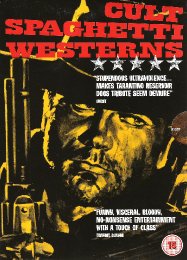
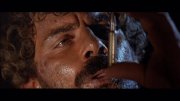
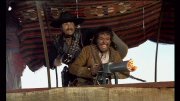

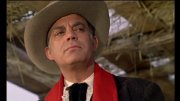
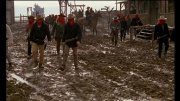
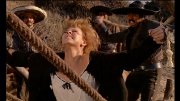
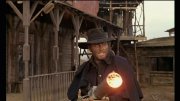

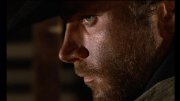
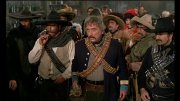
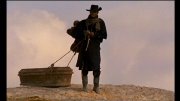
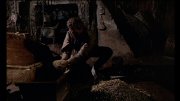
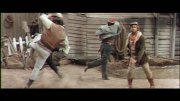
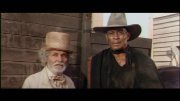
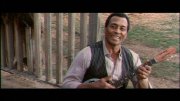
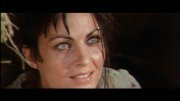
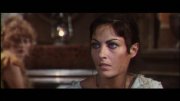
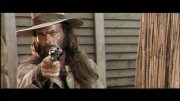
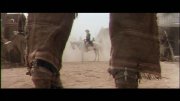
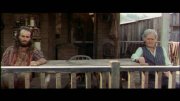
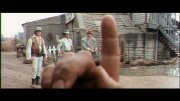
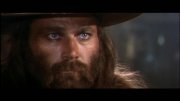
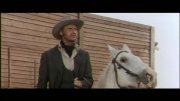
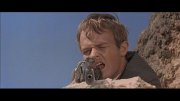
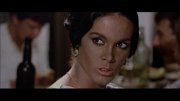
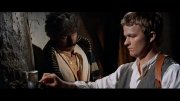
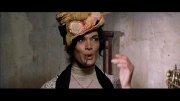
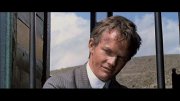
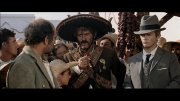
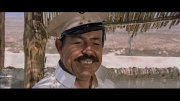

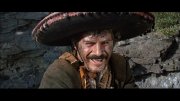


































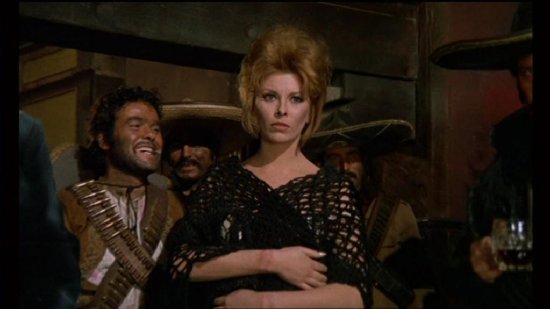











Your Opinions and Comments
Be the first to post a comment!